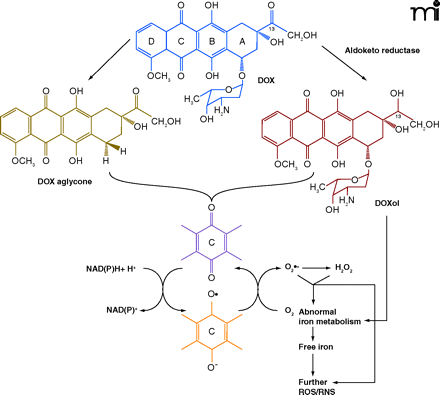
- Institution: Stanford Univ Med Ctr Lane Med Lib/Periodical Dept/Rm L109
- Sign In as Member / Individual
Collateral Damage in Cancer Chemotherapy: Oxidative Stress in Nontargeted Tissues

Figure 3.
DOX-induced generation of ROS/RNS in heart. Cleavage of the sugar residue and reduction of the carbonyl group at C13 produce DOX aglycone and doxorubicinol (DOXol), respectively. Redox cycling of DOX and its metabolites generates ROS including O2·− and H2O2. ROS and DOXol can affect iron metabolism and lead to increased levels of cellular free iron ions, which induce further ROS/RNS generation.


